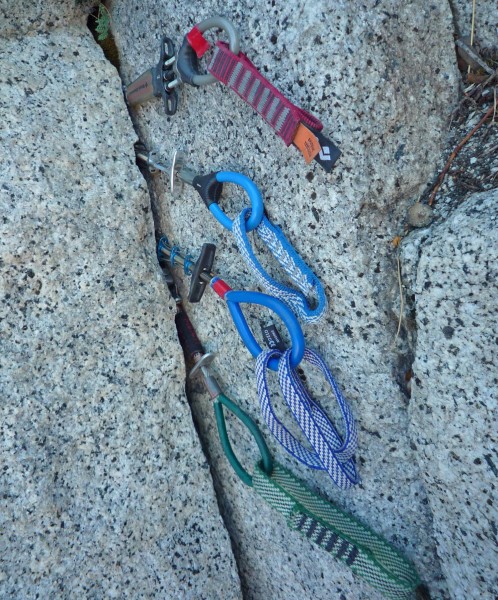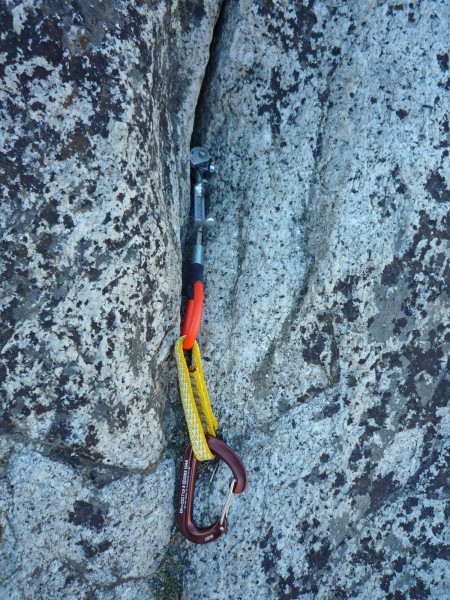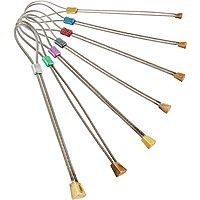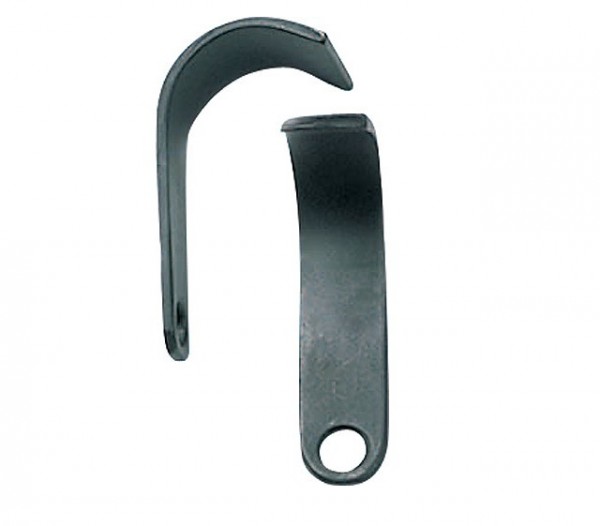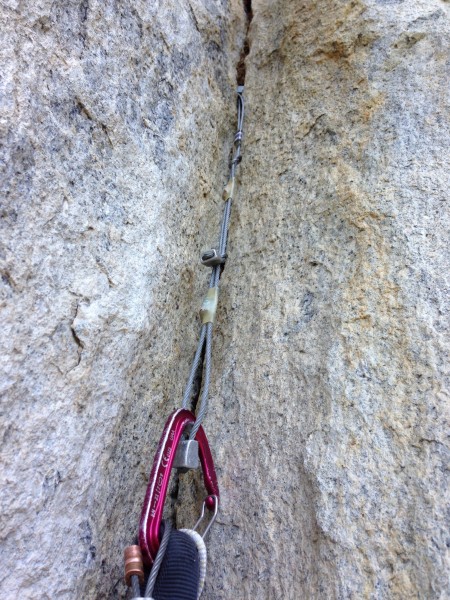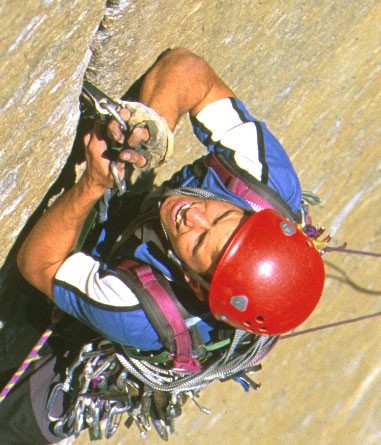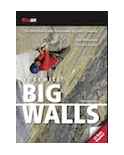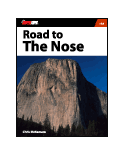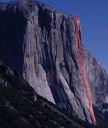Carry lots of small cams
It's impossible to carry too many small cams (sizes .33-1"), just try. They weigh nothing and are the most-used pieces on any aid climb. If you have too few, you have to backclean, which means you are more likely to get scared and reach for the hammer.
Offset cams
In the last book, offset cams were "recommended" in the racks. Now we list most racks as requiring 1-2 sets. Yes, you can get up most walls without them; but offset cams are usually the most bomber clean placement in a pin scar. The difference between a tipped out regular cam or a bomber offset cam, is often the difference between C1 and C2 or C3.
Offset micro nuts
These little guys get in pin scars where nothing else can. Non offset micro nuts often won't stick at all or are more likely to get fixed.
Cam hooks
Cam hooks not only save time, they are often the only clean placement that works in a thin crack. They are scary at first, but if you "aid boulder practice" enough with them, you will cruise C2 as fast as you free climb.
Top step
Increasing your reach is usually the best way to find an elusive clean placement. Getting into that top step gives you another foot or more. There are top-stepping tips and other tips at the online How To Big Wall Page here:
http://www.supertopo.com/gear/how-to-big-wall
The easiest way to top step is to use a hand hold to help you balance. Another option is to place an intermediate marginal piece that you just use as a hand hold to get high. A shallow cam hook or shakey cam usually work best. This can be especially useful on traversing terrain where a sketchy intermediate cam hook can help you make a super reach to a distance bomber cam.
Free climb
Many low-angle A2 sections can be easily free climbed. Sometimes a move or two of 5.8 or 5.9 saves ten minutes of trying to get a shallow pin scar placement to hold. Even pasting one foot on an edge and one foot in your top step can help you reach a bomber clean placement. Wearing comfortable free shoes on a low-angle aid pitch is a good idea.
Leave the hammer in the bag
On a route that you might be able to do clean, leave the hammer in the haul bag. Just by having to tag it up, you are more likely to push your clean climbing as far as possible.
Intertwine stoppers
You can make a two-foot mini cheat stick by intertwining three stoppers to snag distant rivets.
You can also use this contraption to snag distant nut placement. It's time consuming but can save you from reaching for the hammer.
Hooks and beak hooking
Often you can hook a crack or fixed head either with a regular hook or with a beak. Medium and large sized Black Diamond Peckers work especially well. A BAT hook can also sometimes get in the eye of a RURP with a broken cable. If you are going to nail, it is much better to use a beak, Pecker or Tomahawk as they are much less destructive than Lost Arrows, knifeblades and angles.
Hand place pitons
Many pin scars take a hand-placed piton. For extra security, give it a few pounds with your palm (leather gloves recommended). Sawed-off pitons often work the best if a hand-placed beak or Pecker won't work.
Cheat sticks
I don't use em. But if it keeps you from reaching for the hammer, go for it.
The How To Big Wall Climb Book has many suggestions for what is the latest and greatest aid gear and here is what is currently on Chris Mac's Aid Rack
